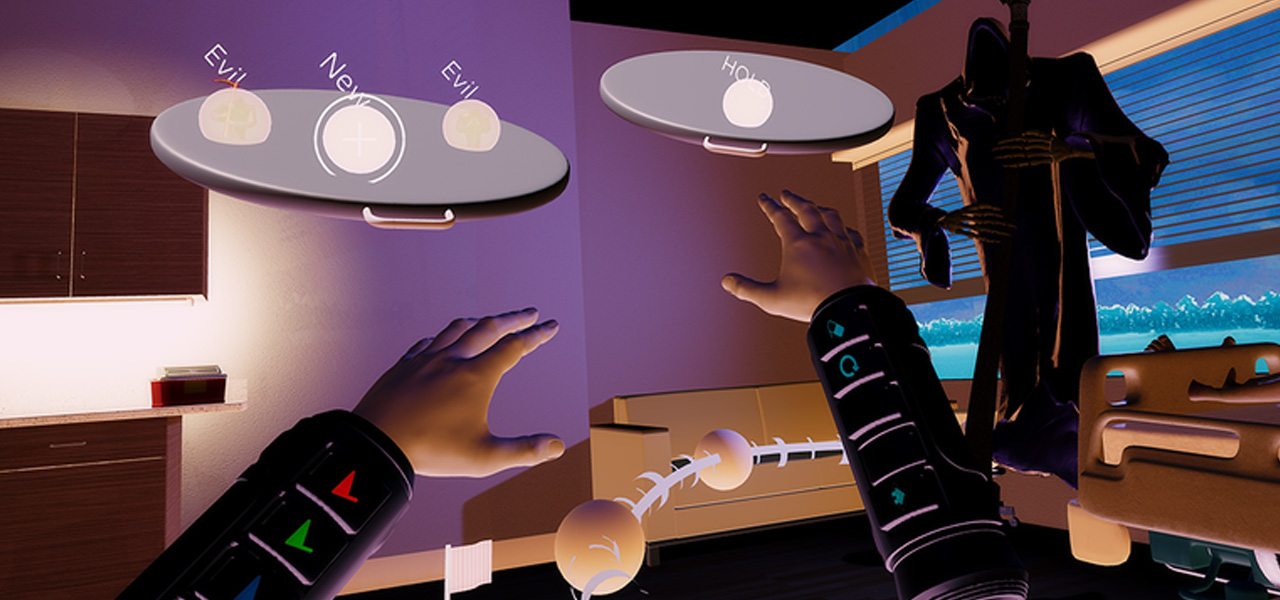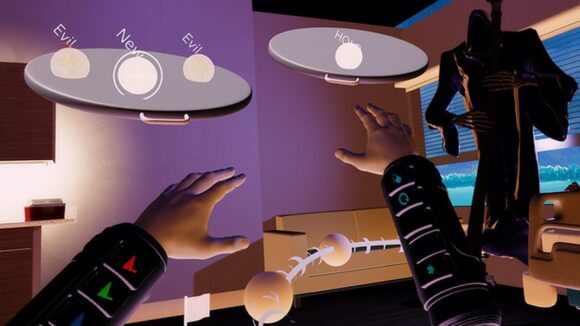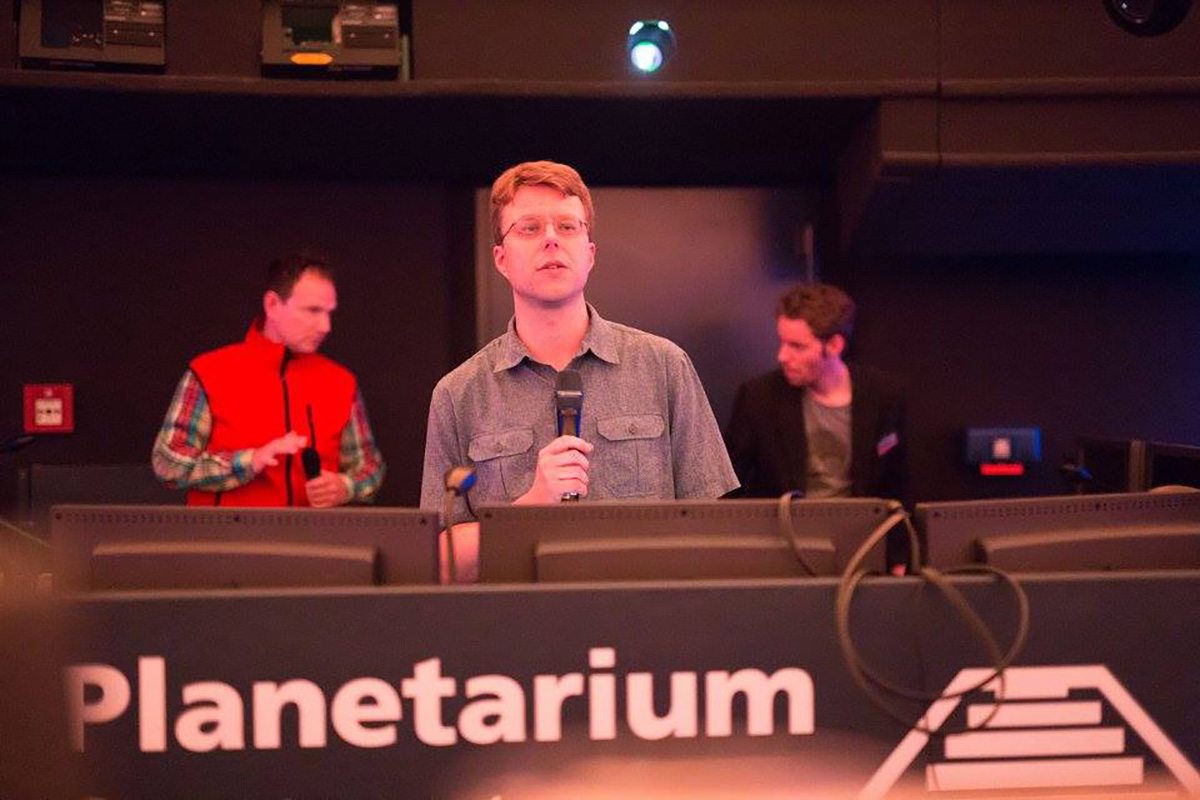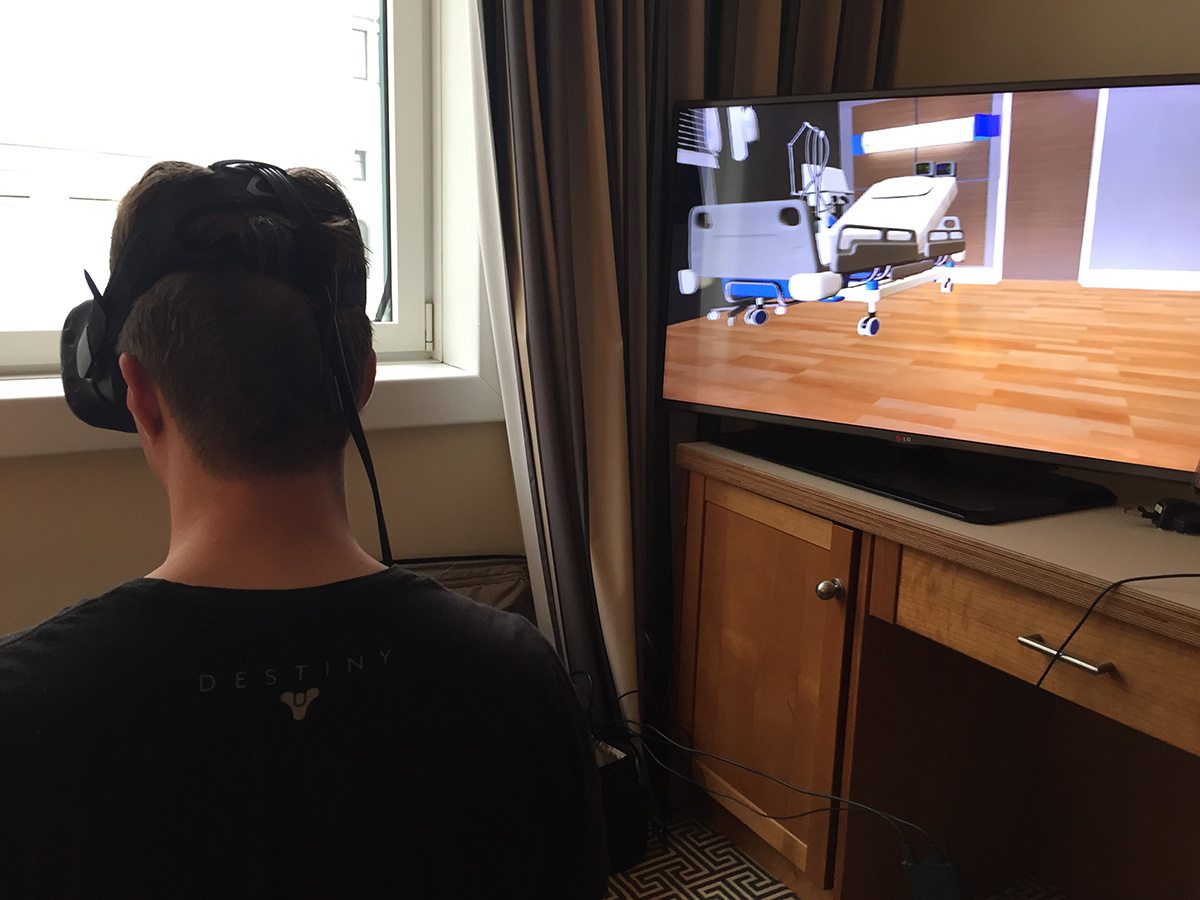

Limitless Wants To Be a Pioneer in VR Character Animation and Interaction
Former Pixar and Bungie employee Tom Sanocki believes that, right now, making interactive animations in vr is not fast and easy enough. It’s something he wants to change with Limitless, his vr startup based in San Francisco and Seattle.
Certainly, there are already a bunch of vr-related animation and building tools out there – things like Medium, Quill, and Tvori. Limitless says it is looking to bring a more professional games-and-animation production approach to this sphere.
At the recent FMX conference in Stuttgart, Sanocki showed Cartoon Brew Limitless’ newest project, Reaping Rewards, which is effectively a demo of where the company is up to in terms of its creative environment for animation and the interactive animated result.
What Limitless is doing differently
With an experienced animation and gaming crew from Pixar and Bungie (Sanocki was himself a character lead at Pixar for 11 years on films including Finding Nemo and Cars), Limitless is aiming to eventually enable high-end quality in vr character animation.

“Nobody is building character animation in vr, to our knowledge,” said Sanocki. “There are people building painting programs in vr, and drawing and sculpting programs. Those are great, but at the end of the day you build something there and it stays there. It stays still. You can’t do anything with it. What we provide is the opportunity to tell a story with it, where characters are the focus.”
“We’re also focusing on interactive vr as a key native part,” he added. “We don’t want it to feel like an add-on, we want it to feel like something normal. It needs to be simple and fast. You can also use it for non-interactive content but if you want to engage with those characters and touch things in the environment to move or change, we want it to feel natural.”

How Limitless works
To produce an animated scene in Limitless, a user or creator starts with its Creative Environment. Sanocki demonstrated the system to Cartoon Brew with a HTC Vive setup. Here, pre-built 3d assets can be accessed via the motion controllers. The user interface is part of the world the user looks at, rather than appearing in any pop-up windows. The environment runs via the cloud and content is not stored locally. The idea is to be able to share scenes with other users.
A simple task Sanocki showed us involved taking one of the assets – a character that looks like the grim reaper – and bringing him into the scene, setting a path, and making him walk across the room. After placing a few extra props and adjusting the animation and the poses of the character, Sanocki said he had finished. He ended the scene with a fade-out. This all took about two minutes. Sanocki suggested that with existing software even this step would take a few hours’ work.
Of course, the scene Cartoon Brew viewed was only a simple room and involved only rudimentary animation, but it’s clear that the idea of the Creative Environment is interaction for the vr ‘animator.’ He or she can quickly see whether the proposed placement and path works – in vr – and then change it if necessary. “Vr looks different in vr than on a flatscreen,” Sanocki said. “So this gives us an opportunity to evaluate it in context and get it just right. Otherwise we’d have to take off the head-set and jump on the computer – that’s slow and frustrating.”
Once the animation is finished, it can then be watched in vr or even generated as a piece of content shown just in 2D. Either way, Limitless’ main aim is to be able to do the animation, review it, and change it on the fly – something that is generally time-consuming to achieve. “We’re looking at ways to facilitate having the director and members of the production team all inside vr together, and updating things live,” said Sanocki.

Interaction is key
However, this is still only part of Limitless’ aim for vr. The company is intent on making its characters interactive. Already Limitless has produced one vr short called Gary the Gull in which a cg bird responds to movements the user makes during the experience. A newer demo, Reaping Rewards, directed by Matthew Ward, which the author tried out, is somewhat more elaborate.
The demo was made with the Limitless VR Creative Environment and involved visiting a dying relative in a hospital bed. The grim reaper was there, too, occasionally indicating whether to try and hold the relative’s hand, or leave the room via a door. You are at times just a passive observer to this mostly melancholy scene, but then also become a willing participant and required to make emotional choices. Sometimes you’re unsure about what to do, which, Sanocki pointed out during the demo, is exactly the point.
So, who is this tool for? Right now, Limitless is targeting the ‘makers,’ what Sanocki calls the professional. He doesn’t think it’s necessarily something that would be for consumer-level animation and then playback, although that clearly could be the attraction of such software if people are already set up with a Vive, for example.
“I do see a time where a professional might build the world and the animations, but then exposes the creation tools to the audience,” said Sanocki. “Then that would enable remixing and re-framing for anyone to go and build their own stories or content.”
Limitless is currently in testing phase. You can find out more at http://vrlimitlessltd.com.

.png)